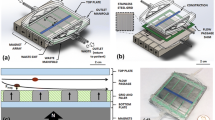Abstract
Hemoglobin (Hb) vesicles are artificial oxygen carriers that encapsulate concentrated purified Hb with a phospholipid bilayer membrane. They have been confirmed to have sufficient oxygen-transporting ability. Even though strictly inspected outdated red cells are used as a source of Hb, it is necessary to introduce an additional process that inactivates or removes viruses in the process of Hb purification in order to guarantee the utmost safety from infection. In this study, Hb filtration to remove viruses was tested with Planova 35N and 15N (virus removal fitters with a Bemberg microporous membrane). The permeation flux (LMH) and the permeated ratio of Hb solution ([Hb] = 5.6 g/dl) through Planova 35N at 13°C were 36 l/m2/h and almost 100%, respectively. The values for Planova 15N at 13°C were 15 l/m2/h and 95%, respectively. The permeation flux increased to 18 l/m2/h when the temperature was raised to 25°C. Under the same conditions, a high efficiency of removal of a bacteriophage, φX174, was confirmed (>7.7 log). These results indicate that Planova 15N is effective for the process of virus removal from Hb solution.
Similar content being viewed by others
Author information
Authors and Affiliations
Additional information
Received: July 23, 2001 / Accepted: December 27, 2001
Rights and permissions
About this article
Cite this article
Naito, Y., Fukutomi, I., Masada, Y. et al. Virus removal from hemoglobin solution using Planova Membrane. J Artif Organs 5, 141–145 (2002). https://doi.org/10.1007/s100470200025
Issue Date:
DOI: https://doi.org/10.1007/s100470200025




